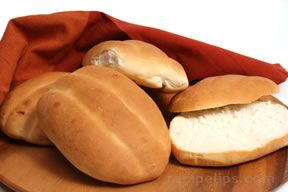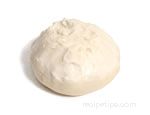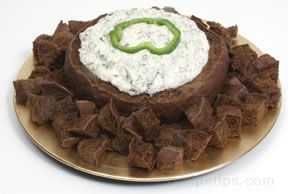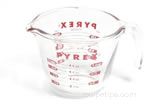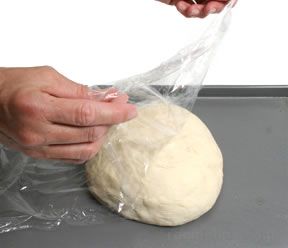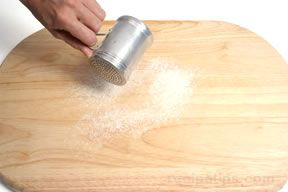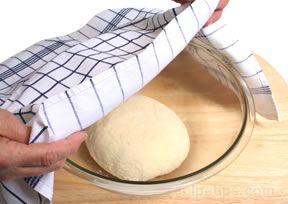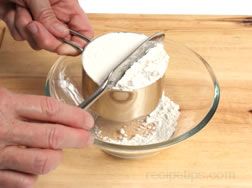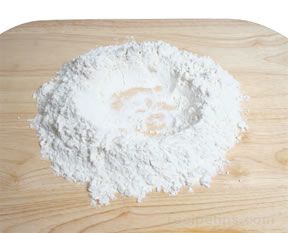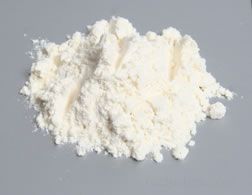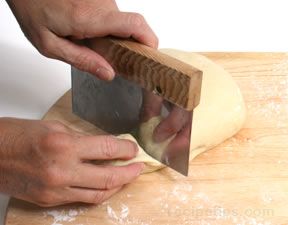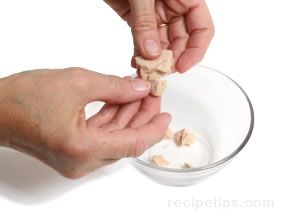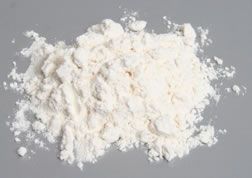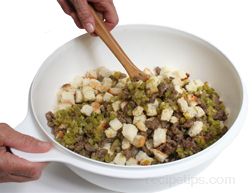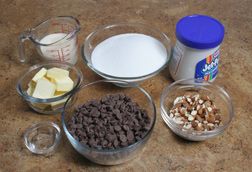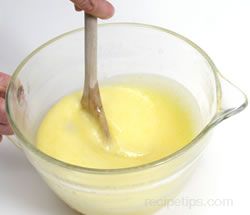Loading
Search
We hope you found what you are searching for. If not, contact us and let us know what your want. We will do the work for you and get back to you when we're done.
bread - Knowledge Search
Top 172 articles found
Displaying 21-40 | << Prev 20 | Next 20 >>
You can always count on not having leftovers when it comes to bread beside any entree. From garlic bread to corn bread, check out these fabulous recipes that makes each carbohydrate worth it!
Leavening Agents | Liquids | SaltsFats and Oils | Sweeteners | Other Flavoring Ingredients
Leavening Agents
Leavening agents are the substances that allow bread dough to rise.
Sourdough Starter | Sponge Starter | Old Dough Method
The primary difference between making bread with a starter and making bread with the direct or straight yeast method is that starter breads require much more time to prepare, but the flavor and texture of the bread is almost impossible to achieve with other leavening methods.
You will need a round loaf of bread, such as Rye or Sour Dough. Keep in mind that a bread that is too soft will absorb the dip quickly and will become soggy.
Slice off the top 1"-2" of the bread.
Measuring | Mixing, Rising, and KneadingAdditional Tools for Preparation | Baking | Serving
Most of the kitchen tools and devices necessary for bread making are simple items that are found in most home kitchens: measuring cups and spoons, a large bowl (preferably glass), a large spoon (preferably wood), a work surface, a dish towel, a sharp knife, and a baking sheet.
Risen breads rely on a means of producing carbon dioxide gas that becomes trapped in the batter or dough causing the dough to rise. The carbon dioxide gas is produced either as a byproduct of fermentation or through the use of chemical agents.
Chemical leavening agents allow bread dough to be prepared in minutes instead of hours. Chemical leavens, such as baking soda and baking powder, react immediately when combined with a liquid so they are mixed with the other dry ingredients before any liquid ingredients are added.
For many bread recipes the final rising is often the second rising, while other breads may require two or more cycles of rising, punching, and kneading before being shaped and allowed to rise for the final time.
Kneading is especially important when preparing yeast breads because it helps to distribute the activated yeast and it enables the protein in the flour to develop into gluten, which promotes the properties of stretching and expansion in the dough.
After the bread dough has been kneaded, it must be allowed to rest in order for the yeast to continue with the fermentation. The fermentation produces carbon dioxide gas, which becomes trapped within the dough, resulting in the rising action that is necessary to develop the texture and flavor of the final product.
Measuring Dry Ingredients | Weight Versus VolumeMeasuring Solid Fats | Measuring Liquid Ingredients
When making bread, it is critical to use precise measurements. Unlike general cooking in which precise measurements are often not as critical, inaccurate measurements in bread making (and most baked items) affect the chemical processes that occur during the preparation and baking.
Hand Mixing on a Flat Surface | Hand Mixing in a Bowl
Hand Mixing on a Flat Surface (Well Method)
A traditional method for dough preparation is to combine the dry and liquid ingredients directly on a clean, smooth work surface.
Food Processor | Heavy-Duty Mixer
Mixing and Kneading with a Food Processor
A food processor can be used for mixing ingredients and kneading the dough for yeast breads. It combines the ingredients quickly and easily, but is limited as to the quantity of dough that can be produced at one time.
A Guide for Selecting the Proper Wheat Flour
It is wise to use flours specifically formulated for various baked goods, such as bread flour or cake flour, although all-purpose flour is suitable for a majority of items.
Rounded Rolls | Crescent Rolls | Fan Tan Rolls | Knot Shaped RollsTwisted Rolls | Breadsticks | Parker House Rolls | Clover Leaf Rolls | Bagels
Many rolls and buns are smaller versions of larger bread loaves.
Fresh Cake Yeast | Active Dry Yeast | Quick-Rising Active Dry Yeast
Yeast that is activated in warm water before it is mixed with the flour and other ingredients to form dough, is the simplest leavening method for preparing yeasted breads.
Types of Flour Ground from Wheat
One of the primary reasons for the popularity of wheat flour is due to its gluten forming capacity when the flour is mixed with liquid. Gluten is the substance that provides dough with elasticity and the ability to stretch as the leavening agent produces carbon dioxide gas, which enables the dough to rise effectively.
How to Make Stuffing
Ingredients | Prepare | Cooking | Other Meats | Safety | Tips
Stuffing is a side dish commonly associated with turkey and Thanksgiving but it can also be enjoyed throughout the year and with many types of meat.
Dry Ingredients | Solid Ingredients | Liquid Ingredients | Fat Ingredients
There are many ingredients that have special functions in the baking and cooking process. Some functions are critical to the success of the finished product.
Flour is used as the main ingredient for many types of food items including breads, rolls, biscuits, pancakes, waffles, cakes, pastries, and pasta. Some food items, such as cakes, waffles, and pancakes, require only a batter to be created, which is usually liquid enough to be poured, while foods such as breads, rolls, and pasta require a dough to be formed, which is a heavier mass that usually requires some kneading or rolling.
Top 172 articles found
Displaying 21-40 | << Prev 20 | Next 20 >>
Advertisement
Advertisement

